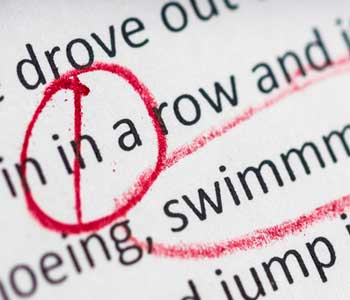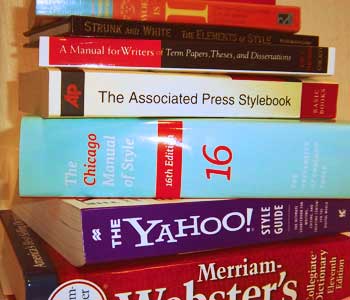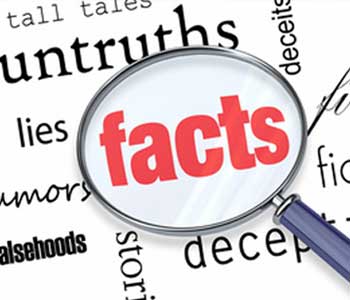Professional Editing Services
Copy editing and proofreading


Proofreading and copy editing are close cousins
Copy editors look at grammar, spelling and punctuation. They are masters at recognizing inconsistencies. For instance in a cookbook, does the measurement for a tablespoon read Tbs every time, or in some recipes is it Tbsp, or even spelled out completely? That’s a copy editing issue. It’s also a copy editing issue if the red-haired bartender is bald in the next chapter.
The proofreader gets the final page proofs and makes sure they contain the copy editor’s corrections. Proofreading is slow, methodical work, mainly checking for typos and spelling errors. However, an experienced proofreader might remark on grammar and punctuation errors too. It is close work that proceeds line-by-line, word-by-word.
A good copy editor or proofreader will leave nothing to chance. For a 300-page coffee table book I was editing, I was told to ignore the captions on the photos because they had already been checked out. I gave them a cursory glance anyway and noted many errors, especially in dates and names.
Part of copy editing is knowing to look for the places where citations or copyright acknowledgement are needed, i.e., quotations or photos. Bring the matter to the appropriate individual and if possible prepare the acknowledgements and obtain any permissions needed.
Standards for proofreading and copy editing
Both proofreading and copy editing serve to “clean up” the writing, not correct structure or content.
Copy editors generally refer to an English grammar style and usage guide like the AP Stylebook, created in 1953 by journalists of the Associated Press, or the Chicago Manual of Style published since 1906 by the University of Chicago Press. Some publications publish their own in-house style guide and require all writers, including freelancers, to abide by their guide.
Editing online copy
Added rules for web editing
Web editing is different from print editing, mostly because we all read differently on the web. For one thing, readers tend to scan a web page instead of reading it. Studies that have tracked reading patterns have come up with different conclusions as to where on the web page to position important content.
The editing skills used for print are still called for with web writing, but it can be more difficult to perform an edit. Lots of distractions make it hard to concentrate. There is a variety of fonts, lower screen resolution, and the question of too much sunlight if you are outdoors. Graphics, images and bright colors can interrupt reading so you your focus and by so doing, lose the message the site is trying to convey. Often there is less content and what is there may not be well organized.
Get used to the Web format
Web content is typically broken up into smaller sections of text by subheaders. The space between subheaders is often only two or three paragraphs. And the paragraphs are short. At first the format looks scattered but soon becomes familiar. Good editors say that if the subheaders are effective, a reader can understand the gist of the story by just scanning the subheaders alone. Reading the subheaders is one way to confirm that the story hangs together.
“With Cori Brett’s editing, our collection of family recipes and helpful hints gathered from several generations was transformed into a highly readable cookbook that is consistent in form and structure.”
~Susan Herman Paradis, Author

What it Takes to be a Good Copy Editor and Proofreader
“You write to communicate to the hearts and minds of others what’s burning inside you, and we edit to let the fire show through the smoke.”
~ Arthur Plotnik
“Cori Brett’s editing clarified my message and ‘got me on track’ with the Annual Guide. The content is crisp, targeted and a fun read.”
~ Judith Oppenheimer, Wine EXCLUSIVES
Every writer needs a professional editor
If it has your name on it, it has to be right. With good copy that reads well you will come across as a polished professional and be respected in your field. Proofreading is the last step of the editing process, like the top of a pyramid. Really there are no shortcuts to the top. Success relies on an experienced editor who is shepherding the product all through the process.
When to hire an editor
Your work has probably been revised several times by the time an editor is looking at it. While beginning writers are understandably eager to have their work looked at by an editor, the best advice is to wait until you have rewritten it more than once. That first draft is probably pretty rudimentary and editing at that point could be a waste of time, unless you are completely stuck and need structural advice to get it moving again. Different levels of editing call for different pricing levels. Be clear on what you want the editor to do before engaging someone, and agree on what the charges will be if the work goes beyond that.
Before you call in the copy editor, your work must be structurally sound, with most stylistic issues resolved. At that point it’s all about being correct, that is, grammar, punctuation, spelling, misplaced modifiers, inaccurate terminology, and all sorts of demons that come up when you are in the throes of writing. Also consider if you want an editor who will explain the reasons for changes so you can learn from the process.
Nitpicking and “foolish consistency”
The nitpicking description of a good editor is actually pretty close to the truth. But in all fairness, this trait comes naturally to many professional editors. Errors just jump out even when they are not even working or looking for them. Many kinds of errors that editors easily spot, your “spell-checker” will likely miss.
“A foolish consistency is the hobgoblin of little minds…” (Ralph Waldo Emerson)
Emerson may be right when it comes to little minds, but in the world of copy-editors and proof-readers, consistency is essential for success. There are many instances where consistency must be upheld. One example is Canadian vs British vs American spelling, i.e. catalogue vs catalog, honour vs honor. There is also the issue of accents in foreign languages. Does your computer allow you to input the proper accents and/or do you know when an accent is called for? Consistency in numbering is also important. Roman numerals can seen a little pompous in certain contexts, but if you so choose, use them throughout.
Fact-checking completes editing
Fact-Checking
Fact-checking is the mundane process of checking factual assertions in non-fictional text to confirm accuracy. If done before publication, it’s pretty matter-of-fact. The practice of fact-checking after a piece of work is out has led to a lot of controversy, especially when there is argument on what the truth is. Competing parties sometimes each have their own fact-checkers and they battle it out. Accusations can fly and tempers flare.
Different types of fact-checking
Fact-checking can start with simply checking for correct spelling of an unusual name or prominent person, or confirming that a significant date is accurate. Sometimes the fact-checker needs to verify with sources that their statements have been correctly reported. The explosion of “fake news,” has muddied the water, and it has become difficult to tell what is fake and what is real.
Experience counts in fact-checking
It takes an experienced editor to search out the facts. Aside from obvious misspellings or errors, the editor must have a good sense of what “just doesn’t feel right.” One phone call to the right source can alleviate concern. The editor must be skillful and diplomatic when asking questions. Readers have become accustomed to finding inaccuracies in Web articles, and it has somewhat dulled our senses to the importance of being correct in print. But it is ultimately the editor’s name and reputation that are on the line.

“If you re-read your work, you can find on re-reading a great deal of repetition can be avoided by re-reading and editing.”
~ William Safire
